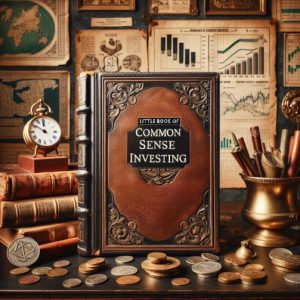High-Yield Investing with Dow 30 Dividend Stocks
May 4, 2024
Investing in dividend stocks is a timeless strategy, and when combined with technical analysis and an understanding of mass psychology, it can lead to exceptional returns. This article will discuss how investors can boost their dividend income and total returns by combining dividend investing with technical tools like monthly charts and mass psychology principles. We will use the Dow 30 stocks as our universe of investments and explore how this strategy has proven successful, especially during market panics and extreme sentiment.
Dividend Investing: A Foundation for Income Investors
Dividend investing is a time-honoured strategy, providing a steady income stream and the potential for long-term capital appreciation. Companies that pay dividends are more mature, profitable, and stable, offering safety in volatile markets. Warren Buffett, one of the world’s most successful investors, is known for seeking companies with a history of paying dividends and holding them for the long term.
“Dividends not only provide a tangible source of returns in the form of cash payouts but also serve as an indicator of a company’s financial health and commitment to returning value to shareholders,” says Megan Horn, a portfolio manager at Infinity Investment Management. “They provide a margin of safety in downturns, as companies with strong dividend histories often become attractive to income-seeking investors during market corrections.”
The Dow 30 and Dividend Aristocrats: A Solid Foundation
The Dow Jones Industrial Average (DJIA), commonly known as the Dow 30, is an index of 30 large, publicly traded companies across diverse sectors, providing a snapshot of the US economy. These established, blue-chip firms are known for their financial stability and longevity. As of December 2023, the Dow components included heavyweights such as Apple (AAPL), Microsoft (MSFT), Coca-Cola (KO), Johnson & Johnson (JNJ), and Visa (V).
Within the Dow 30, investors can find a subset of companies known as Dividend Aristocrats – an elite group of stocks that have increased their dividend payouts for at least 25 consecutive years. These companies have a proven commitment to returning cash to shareholders and are resilient during economic downturns. Examples of Dividend Aristocrats in the Dow include McDonald’s (MCD), Chevron (CVX), and Procter & Gamble (PG).
“Investing in Dividend Aristocrats offers comfort to income investors,” notes Thomas Keller, Chief Investment Officer at Summit Capital Partners. “These companies have demonstrated their ability to navigate economic cycles while consistently increasing their dividends, which is a testament to their financial strength and management’s confidence in the business.”
Technical Analysis: Enhancing Dividend Stock Selection
While fundamental analysis is crucial for assessing a company’s financial health and dividend safety, technical analysis provides valuable insights into market sentiment and potential turning points. Combining these disciplines can lead to more optimal entry and exit points for dividend stocks.
“Technical analysis helps identify oversold conditions, which can provide attractive buying opportunities for dividend stocks,” explains Elena Martinez, a technical analyst at Aurora Financial Group. “By combining dividend yield with price momentum, investors can target stocks that offer income and the potential for capital appreciation.”
Monthly Charts and Extreme Sentiment
Using monthly charts provides a longer-term perspective and helps filter out short-term noise. When a stock in the Dow becomes hugely oversold on a monthly chart – indicated by indicators like the Relative Strength Index (RSI) dipping below 30 – it may signal a compelling buying opportunity. This approach leverages the concept of reversion to the mean, suggesting that a return to more normalized conditions often follows periods of extreme sentiment.
For example, consider the performance of Home Depot (HD), a Dow component and dividend payer, during the 2008 financial crisis. In February 2009, the stock’s monthly RSI reached an oversold level of 23, indicating excessive pessimism. Investors who bought at that point secured a dividend yield of over 3% and benefited from a significant rebound in the stock price, resulting in a total return of more than 60% within a year.
Similarly, during the initial pandemic-driven market crash in March 2020, Goldman Sachs (GS) experienced an extremely oversold condition, with its monthly RSI falling below 20. Investors who recognized this extreme sentiment and bought the stock would have locked in a dividend yield of over 4% and witnessed a remarkable price recovery, resulting in a total return of nearly 100% by the end of the year.
Mass Psychology and Contrarian Investing
Mass psychology plays a pivotal role in market movements, and understanding crowd behaviour can provide valuable insights for dividend investors. When panic or extreme fear sets in, even solid dividend-paying stocks can become oversold as investors rush for the exits. Contrarian investors view these periods as opportunities to buy quality stocks at discounted prices, locking in higher dividend yields.
“Mass psychology is a powerful force in markets,” asserts Jeremy Matthews, a behavioural finance expert at Beacon Insights. “By recognizing and understanding the emotions driving crowd behaviour, investors can make more rational decisions. During panic, dividend stocks can become unfairly punished, creating opportunities for those who maintain a disciplined and patient approach.”
For instance, during the dot-com bubble burst in the early 2000s, even stable dividend payers like Johnson & Johnson (JNJ) experienced significant drawdowns. In 2002, as the market corrected, JNJ’s stock price declined by over 30%, pushing its dividend yield above 2.5%, an unusually high level for the company. Investors who bought at that time benefited from the recovery, enjoying both the dividend income and substantial capital gains as the stock rebounded.
Similarly, during the European debt crisis in 2011, fears of a global economic slowdown led to a sell-off in many sectors, including consumer staples. Procter & Gamble (PG), a stalwart dividend payer, saw its stock price drop by nearly 20%, pushing its dividend yield above 3.5%. Again, investors who maintained a contrarian mindset were rewarded as the stock recovered and reached new highs, providing both dividend income and capital appreciation.
A Comprehensive Approach: Technicals, Mass Psychology, and Fundamentals
Combining technical analysis, mass psychology, and fundamental insights provides a robust framework for dividend investing. Here are the key steps for implementing this strategy:
1. Focus on Quality Dividend Payers: Start by screening the Dow 30 components for companies with a strong track record of dividend payments and fundamentals indicating dividend safety. Key factors include financial health, consistent profitability, and a manageable payout ratio.
2. Identify Extreme Sentiment: Utilize monthly charts and indicators like the RSI to identify periods of extreme sentiment, whether overly optimistic or pessimistic. Wait for oversold conditions (RSI below 30) to indicate potential buying opportunities.
3. Understand Mass Psychology: Recognize the role of crowd behaviour in market movements. During times of panic or excessive optimism, assess whether the underlying fundamentals of the dividend-paying companies have changed. The market’s reaction is often more extreme than the actual data suggests.
4. Buy on Oversold Conditions: Consider it a potential buying opportunity when a quality dividend payer becomes oversold due to market sentiment or mass psychology. Lock in a higher dividend yield and position yourself for possible capital gains as sentiment reverts to the mean.
5. Set Stop Losses: To manage risk, use stop-loss orders to protect against significant declines. Set these stops at levels that allow for normal price fluctuations but limit potential losses if the stock declines.
6. Monitor Fundamentals: Regularly review your holdings’ financial health and dividend safety. Stay updated on company news, earnings reports, and any changes in dividend policies.
7. Reevaluate on Overbought Conditions: If a stock becomes overbought (RSI above 70) and the dividend yield has compressed significantly, consider it a potential signal to take profits. Realize that mean reversion can also occur after periods of excessive optimism.
8. Diversify Your Holdings: To reduce risk, build a diversified portfolio of dividend stocks across different sectors. Diversification helps smooth out the impact of sector-specific events and economic cycles.
9. Long-Term Perspective: Dividend investing is typically a long-term strategy. Focus on the overall income stream and total returns over time rather than short-term price fluctuations.
Case Studies: Successful Dividend Trades with Technicals and Mass Psychology
Microsoft (MSFT) – Buying on Extreme Pessimism (2009)
During the financial crisis of 2008-2009, even technology giant Microsoft (MSFT) experienced a significant downturn as the market plunged. In February 2009, MSFT’s monthly RSI reached a highly oversold level of 21, indicating excessive pessimism. The stock was trading at around $15 per share, offering a dividend yield of approximately 3%.
Investors who recognized the opportunity and bought MSFT then would have benefited from the subsequent rebound. Within a year, the stock price had more than doubled, and the dividend yield had compressed to below 2%. This trade provided a high dividend yield and significant capital appreciation, resulting in a total return of over 120%.
Coca-Cola (KO) – Contrarian Play during Market Panic (2020)
Coca-Cola (KO), a classic defensive consumer staple stock, experienced a sharp sell-off during the initial months of the COVID-19 pandemic in 2020. As lockdowns were implemented worldwide, fears of a recession and changes in consumer behaviour led to a rush for safer assets. In March 2020, KO’s monthly RSI dipped below 30, indicating an oversold condition.
Contrarian investors who bought KO then would have locked in a dividend yield of over 4%, significantly higher than the stock’s historical average. As the market recovered and optimism returned, KO’s stock price rebounded sharply, resulting in a total return of nearly 30% by the end of 2020. This trade demonstrates the power of combining dividend investing with mass psychology during market panics.
Conclusion: A Winning Strategy for Income and Total Returns
Investing in dividend stocks within the Dow 30, guided by technical analysis and mass psychology, offers a robust strategy for income investors. By focusing on quality companies, identifying extreme sentiment, and recognizing the impact of crowd behaviour, investors can boost their dividend yields and achieve substantial total returns.
The case studies of Home Depot, Goldman Sachs, Microsoft, and Coca-Cola illustrate how this approach has proven successful during various market environments, including financial crises, pandemics, and sector-specific drawdowns. By maintaining a disciplined and patient approach, investors can take advantage of market extremes and benefit from reversing the mean.
As Megan Horn of Infinity Investment Management summarizes, “Dividend investing is not just about the income stream; it’s about building wealth over time. Combining dividend payers with technical analysis and a mass psychology perspective provides a more comprehensive framework for investors seeking both current income and long-term capital appreciation.”
By adhering to the strategy outlined in this article, income investors can enhance their dividend portfolios and achieve winning results in the Dow 30 and beyond.
Other Stories of Interest

Elegance in Investment: How to Buy Gold on Robinhood

Little Book of Common Sense Investing: Uncommon Sense for Smart Investors

Trend Trader: Tune Out the Madness, Follow the Trend

What Type of Trader Are You: Fast Rabbit or Steady Turtle?

Trading Journal: The invaluable tool for traders

Winning the loser’s game timeless strategies for successful investing

Why ‘When Will Market Bottom Out?’ is Misguided

What Is Mob Mentality? A Symbol of Irrationality

US Dollar Devaluation: How the Fed Legally Robs You

How to Short the Market with Options: Reserved for the Bold and Fearless

The Suave Strategy: How to Buy Gold and Silver for Investment

Which of the Following Investing Statements Is False? Let’s Uncover the Truth!

An Exquisite Approach: How to Buy Gold Without Paying Sales Tax

Extra return generated through market timing strategies is not for risk

How to Buy Gold in Australia: A Captivating Roadmap to Glittering Riches
The Dance of Investor Sentiment: Unveiling the Impact on ETF Flows and Long-Run Returns



